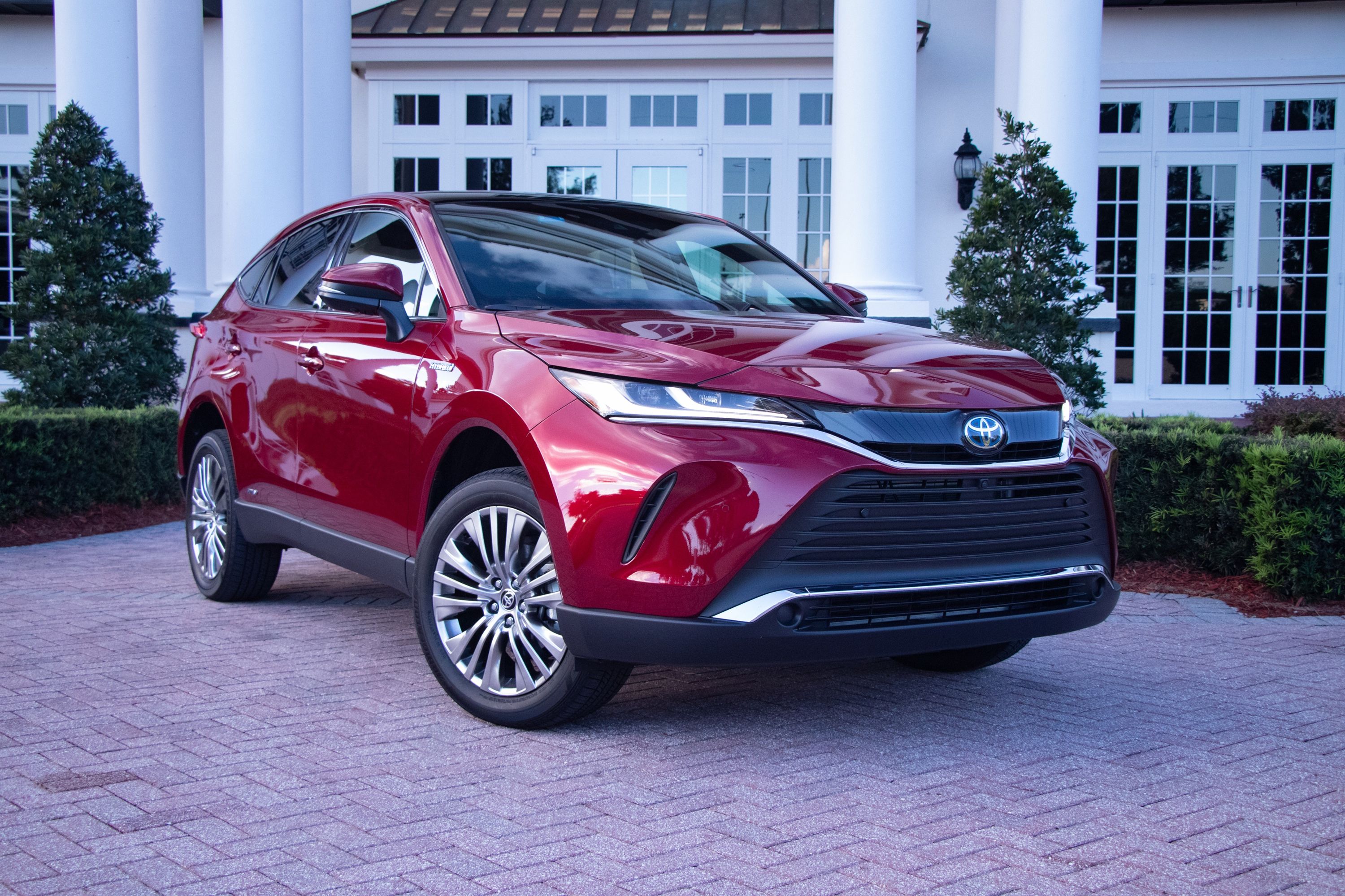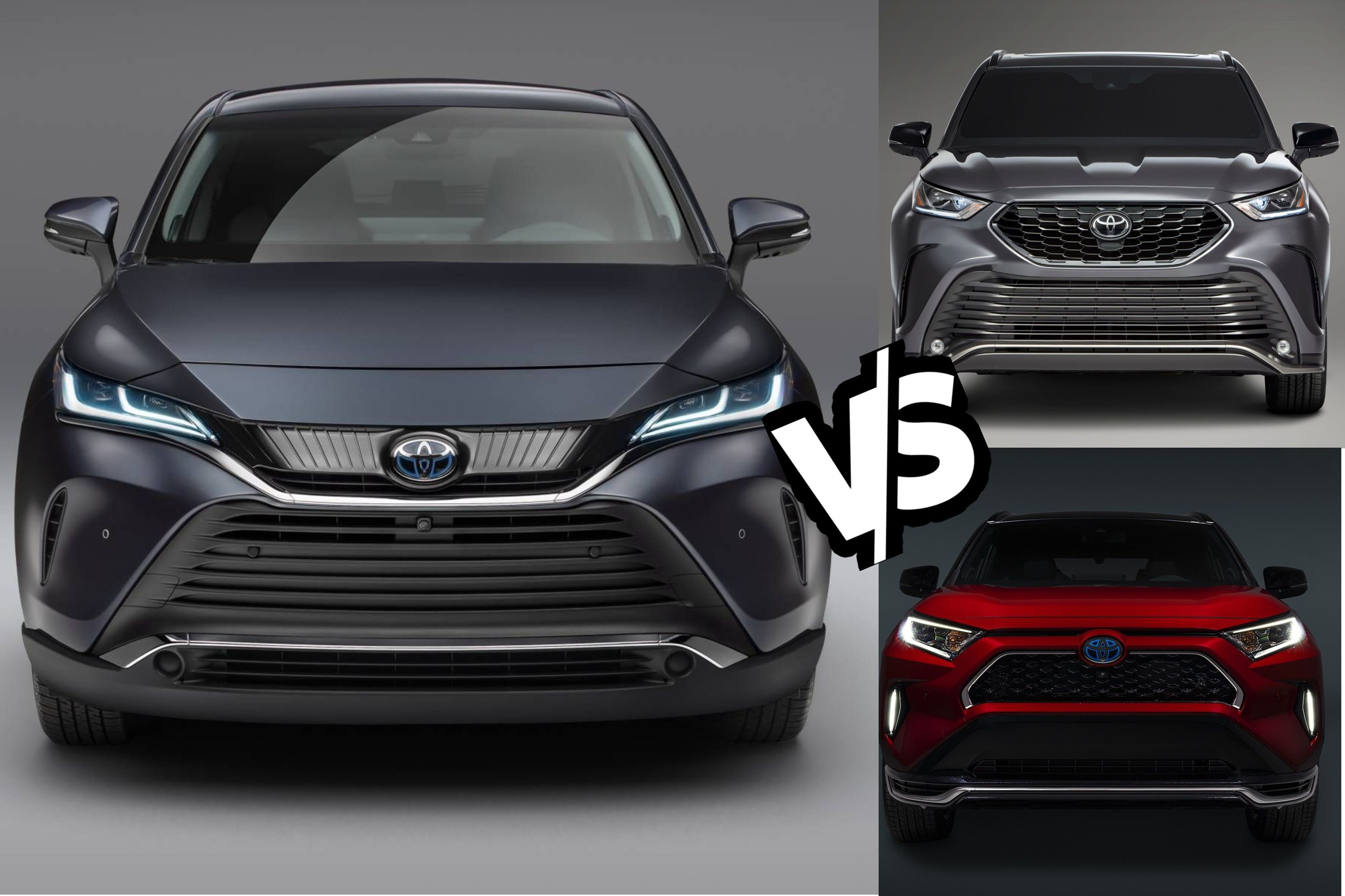
Automakers that want a two-row midsize crossover in their lineup have a pretty simple recipe to follow: Take a three-row midsize crossover, cut off the third row, and change the styling to taste. New models that have been cooked up like this include the Honda Passport and Volkswagen Atlas Cross Sport but since there is no governing body telling automakers how to classify their vehicles, the definition of midsize can be pretty hazy.
Midsize crossovers range from smaller two-row models like the Hyundai Santa Fe up to behemoths like the Chevrolet Traverse, while the recently-revealed 2021 Toyota Venza enters the smaller end of the midsize space. Positioned between the compact RAV4 and three-row, midsize Highlander, the Venza will occupy a unique portion of the segment that should help it avoid direct competition. Here's how the new Vena compares to its corporate siblings and other midsize rivals.
Styling: Looks Like A Lexus
The new Venza is based on the same TNGA-K platform as the smaller RAV4, with the two sharing the same wheelbase, but the Venza shares very little with its sibling in terms of styling. Whereas the RAV4 has more harsh edges and squared-off wheel arches, the Venza uses gentle curves and more rounded body lines. It features premium styling elements such as LED headlights, 19-inch wheels, and a coupe-like rear roofline. Global shoppers may recognize this design from the Venza's Japanese counterpart, the Toyota Harrier, but customers in the US will likely see it as a near-Lexus model from Toyota.
Performance: Borrowed From RAV4
Under the hood, Toyota only plans to offer the Venza with one drivetrain, at least initially. It is powered by a 2.5-liter four-cylinder mated to three electric motors sending power to all four wheels through a continuously variable transmission. The total system output is 219 horsepower. If this drivetrain sounds familiar, that's because it is the exact same output found in the RAV4 Hybrid. By comparison, the heavier Highlander Hybrid pumps out 243 hp.
Toyota says the Venza weighs 3,860, 3,900, or 3,920 pounds depending on the trim level, making it around 100 pounds heavier than the RAV4 Hybrid. With the same drivetrain and more weight to carry around, the Venza should perform similarly to its smaller sibling, hitting 60 mph in around 7.1 seconds. The Venza matches the RAV4 Hybrid's 40 mpg combined figure for the base LE trim and we expect fuel economy to be similar across the board.
By comparison, the larger and heavier Highlander Hybrid only manages around 35 mpg on the combined cycle. Most non-hybrid midsize SUVs will struggle to hit 30 mpg on the highway, meaning the Venza should easily be the most efficient of the bunch.
Interior: More Premium
As with the exterior styling, the Venza's interior design is a major departure from other Toyota products. Some elements like the steering wheel and shifter look familiar but most of the other materials in the cabin look like they belong in a Lexus product. The Venza's cabin looks nothing like the RAV4 or Highlander aside from the 12.3-inch touchscreen it shares with the latter. Toyota has gone for a more sporty and luxurious cabin design that looks cozier but less practical than its two siblings. In addition to the higher quality materials, the Venza features more luxurious options including a new Star Gaze panoramic roof and power side mirrors.
Practicality: RAV4 Coupe Or Two-Row Highlander?
In terms of size, the Venza skews more towards being a "RAV4 Coupe" than a "two-row Highlander." Its wheelbase is identical to the RAV4 as is the width. Only the overall length is a bit longer. Rear legroom is more generous than the RAV4 by just one inch but its sloping roofline means the Venza only houses 36.3 cubic feet in the trunk, which is one cubic foot less than the RAV4.
The Highlander is not the largest midsize crossover by any stretch but its cargo volume of 48.4 cubic feet behind the second row and 84.3 cubic feet with the second and third rows folded dwarfs the Venza. In fact, the Venza loses a practicality test against most midsize crossovers (based on space behind the second row) save for the Hyundai Santa Fe and Jeep Grand Cherokee. Toyota has not published the Venza's cargo capacity with the second row folded but we don't expect it to be highly competitive based on size.
Pricing: Somewhere In The Middle?
Toyota has not priced the 2021 Venza yet, making it a bit difficult to place within the midsize category. The RAV4 Hybrid starts at $28,350 and Highlander pricing begins at $38,200, so it should be safe to assume that the price of the new Venza will sit somewhere between those two figures.
Making the Venza a hybrid-only vehicle should place it towards the higher end of the pricing scale in the midsize category closer to most of the three-row players. Toyota is clearly aiming for a more premium and environmentally-conscious buyer. The Venza will not be the most practical vehicle in the midsize class but it should be among the most premium and fuel-efficient.

